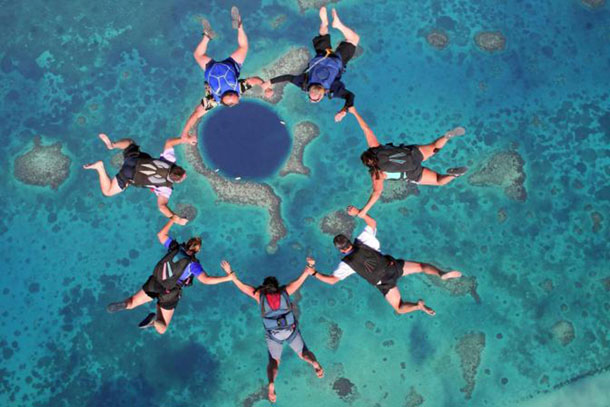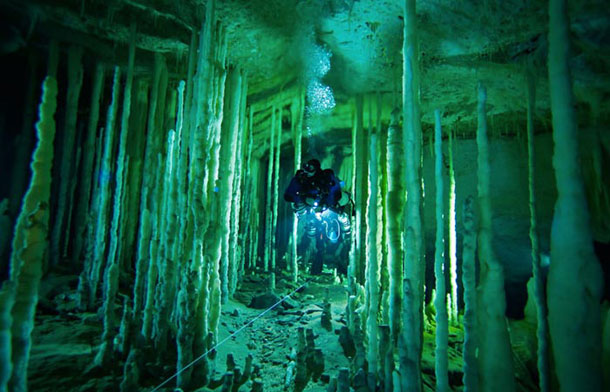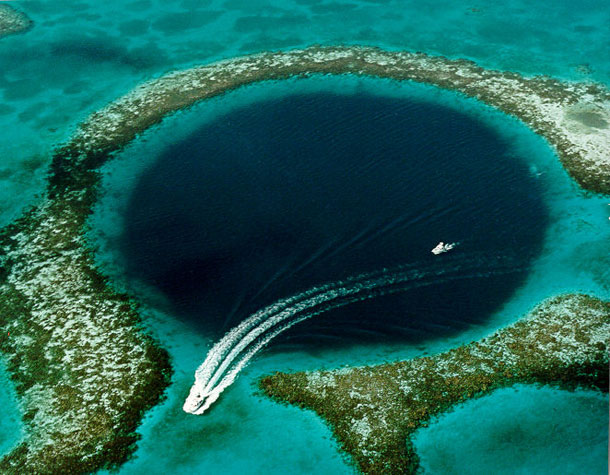On the south-west border of Mexico, Belize is home to 3 of the 4 atolls in the Western Hemisphere. In the Lighthouse Reef atoll, the farther west, you can find one of the most extraordinary spot on the planet: the Great Blue Hole.
This is the largest natural sinkhole, with phenomenal dimensions and a singular story. This almost perfect shaped circle reaches a diameter of 300m and goes 124m deep. From a bird’s eye view, it offers a spectacular sight with this incredible deep blue spot standing out against the turquoise blue of the lagoon of the Lighthouse Reef.
Studies have dated its origins back to 150000 years old, during the last glacial era, and it has been shaped over several periods. Starting as a limestone cave formed when sea levels were lower, it then submerged and collapsed into a sinkhole when sea level rose. Going down, you can explore stalactites and stalagmites formations as well as hundreds of caves. No wonder that the Great Blue Hole is listed as a UNESCO World Heritage Site as well as the Belize Barrier Reef Reserve System it belongs to.
Today, it shelters a very particular fish population and attracts thousands of divers, making it Belize’s number one attraction.







